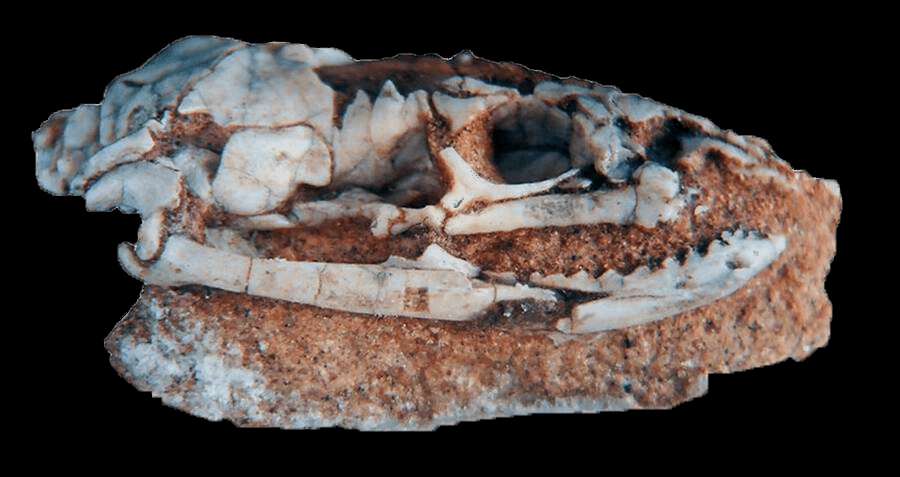Ancient Serpent with Legs: The 95-Million-Year-Old Skull That Rewrites Snake Evolution Forever
A blind, burrowing snake species called scolecophidians have long been believed to be the most primitive living snakes and, thus, scientists believed snake ancestors were likely to have similar characteristics to them. But the artifacts of Najash suggest something different.
Scientists believe that snakes used to have four legs instead of Najash’s two legs, which means that the four-limbed ancestor of snakes lost the front legs early on in the evolution line, at least 170 million years ago. The new study suggests after losing their front limbs, snakes evolved into hind-legged creatures and stayed that way for at least tens of millions of years.
“‘Snakeness’ is really old, and that’s probably why we don’t have any living representatives of four-legged snakes like we do all of the other lizards,” explained co-author Michael Caldwell, a vertebrate paleontologist at the University of Alberta.

Fernando Garberoglio, et alThe snake fossil was discovered in the La Buitrera Palaeontology Area in northern Patagonia.
He continued: “Snakes probably were one of the first lizard groups to start experimenting with limblessness, but what’s really intriguing is that they were also very clearly showing the characteristics of their skulls, which are their specialization.”
The skull features of Najash are very different compared to the skulls of scolecophidians, which are small-mouthed.
In comparison, Najash snakes had large mouths lined with sharp teeth and the skulls possessed similar mobile joints that are distinct to modern snakes. However, these ancient serpents also had some bony skull features found in more typical lizards.












